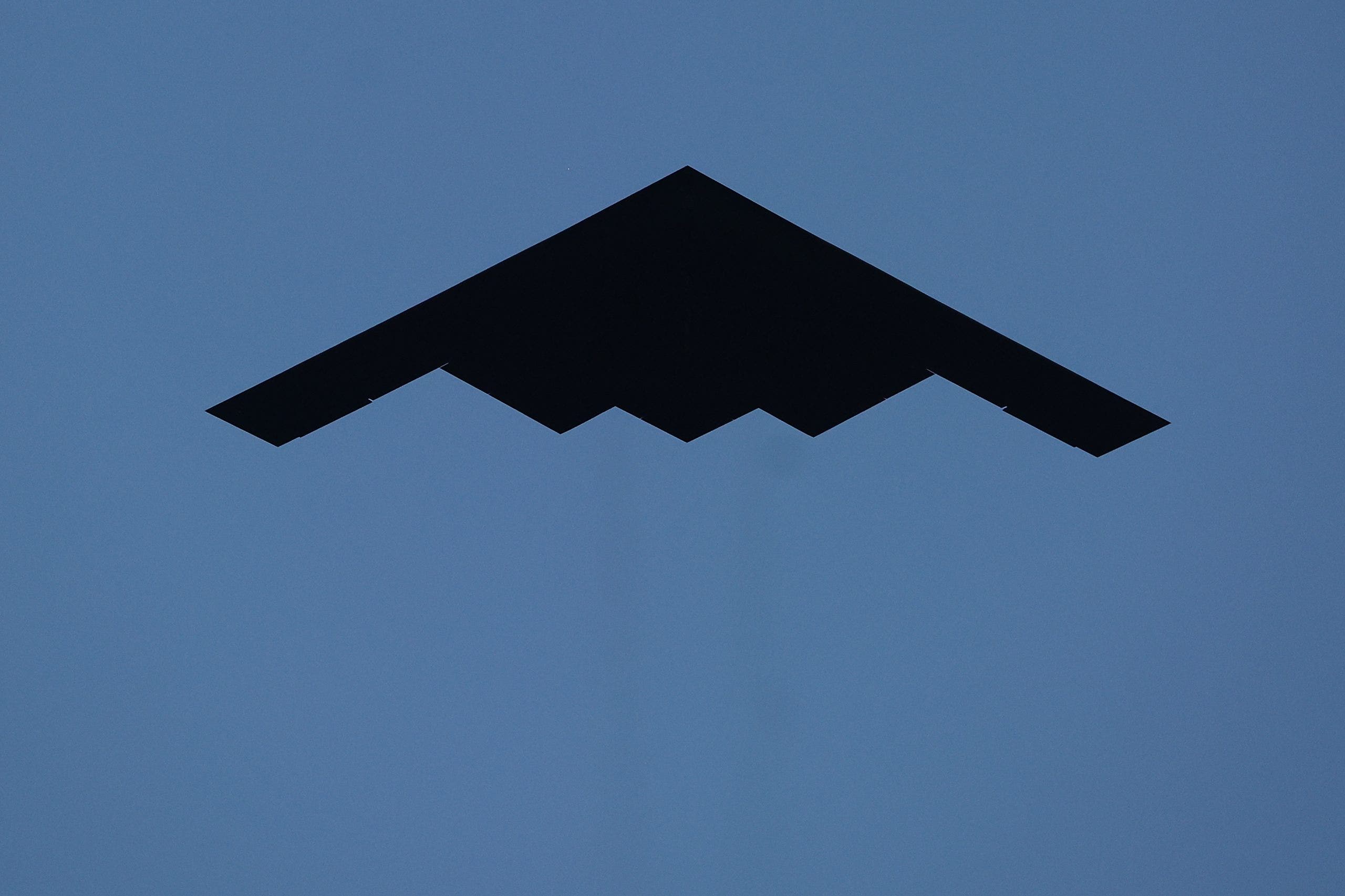NEWYou can now listen to articles!
Iran can either talk, or get its weapons facilities bombed. Iran has gone too far and can make weapons-grade nuclear fuel for one bomb in less than a week, with more to follow.
Two aircraft carriers and a fleet of B-2 stealth bombers are pointed straight at Iran. Never before have we seen such a big forward deployment of B-2 bombers.
Do the options really include a military strike on Iran’s nuclear facilities? “Of course it does,” President Donald J. Trump said Monday.
TRUMP SAYS IRAN MUST DITCH ‘CONCEPT OF A NUCLEAR WEAPON’ AHEAD OF MORE TALKS
What’s changed is that a campaign to attack Iran’s nuclear weapons production is no longer far-fetched. Frankly, the attacks on Iran’s air defenses carried out by Israeli F-35s and other planes last year have lowered the risk calculus, both political and militarily. With the recent confirmation of Gen. Daniel Caine as chairman of the Joint Chiefs of Staff, Trump has a new top military adviser who is experienced in planning and carrying out precision airstrikes.
Not that he wants to go to war; Trump in his first term proved cautious and calculating in his use of military force. But Iran simply cannot be permitted to build a nuclear weapon and the moment is here. Iran could enrich enough fuel for one bomb in a week, former Secretary of State Antony Blinken said last summer. Iran can enrich enough fuel for up to 17 bombs in four months, according to analysis of the latest UN inspection report from February. Then it’s about six months to assemble and field a weapon; most nuclear weapon design testing is done by computer, and who knows if Russia might assist.
“If it requires military, we’re going to have military,” Trump said on April 9. “Israel will obviously be very much involved in that. They’ll be the leader of that. But nobody leads us. We do what we want to do.”
For now, Iran is at the table, with more talks scheduled for April 19 in Rome. To keep the talks going, a big part of Trump’s strategy is to deploy to U.S. Central Command the forces required to smash Iran’s nuclear weapons manufacturing capability. The military calls this “sovereign options,” because Trump needs no other country’s permission to launch strikes from aircraft carriers and bombers.
Here’s one way the battle plan could unfold.
Israel opens the airspace.
In the October 2024 strikes, Israel launched over 100 combat planes to attack about 20 target areas in Iran, including air defenses and missile and drone factories. An attack to “de-nuke” Iran would again see Israel focus on destroying air defenses.
Aircraft carriers hold the skies.
The U.S. Navy aircraft carriers USS Harry S. Truman and USS Carl Vinson are already in the Arabian Gulf region. Yes, they are waging a steady campaign against the Houthis in Yemen, but I assure you they can turn their attention to Iran at any moment. If that happens, E-2 radar planes from the carriers will add to the intelligence and surveillance picture, while F-35 and F/A-18 fighters, and the EA-18G Growler electronic warfare planes add offensive capability.
B-2 Spirit stealth bombers hit nuclear manufacturing sites.
Iran’s weapons complex is underground, so it will take a lot of rubble to debilitate it. Enter the B-2 stealth bomber, which carries weapons like the 30,000-lb. Massive Ordnance Penetrator, fused to push through earth and concrete then detonate its blast in the underground Iranian facilities. This is why the massive forward deployment of the B-2 is so significant. On the first night of Operation Iraqi Freedom in 2003, three B-2 bombers flew from the Indian Ocean island base of Diego Garcia and three flew from Whiteman AFB, in Missouri to attack Baghdad. Now Trump has sent a reported six B-2 bombers to Diego Garcia, which indicates a plan for intensive, repeated strikes, for as long as necessary.
CLICK HERE FOR MORE OPINION
U.S. Navy destroyers guard the skies against missiles and drones.
The U.S. still has forces stationed in Iraq, Syria and at other forward locations around the Persian Gulf, and they must be protected from Iranian retaliation via missiles and drones. U.S. Navy Arleigh Burke-class destroyers armed with an array of Standard Missiles did this job well last year, and they will be ready to take those shots again to defend American forces.
CLICK HERE TO GET THE APP
Remember the purpose of U.S. strikes would be to degrade Iran’s nuclear facilities, and stoke Ayatollah Khamenei’s fears for the stability of the regime. Iran’s President Mahmoud Pezeshkian says he wants the nuclear talks to proceed – not that it will be easy, especially if China keeps purchasing 90% of Iran’s oil.
It’s been almost ten years since the flawed Iran nuclear deal was touted as the way to stop Iran from building a nuclear weapon. This time it will be the U.S. military that swings the balance, hopefully for diplomacy, and if needed, for a swift end to Iran’s nuclear ambitions.













